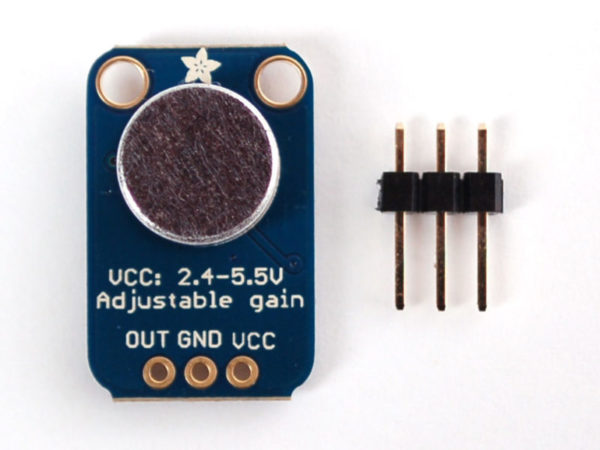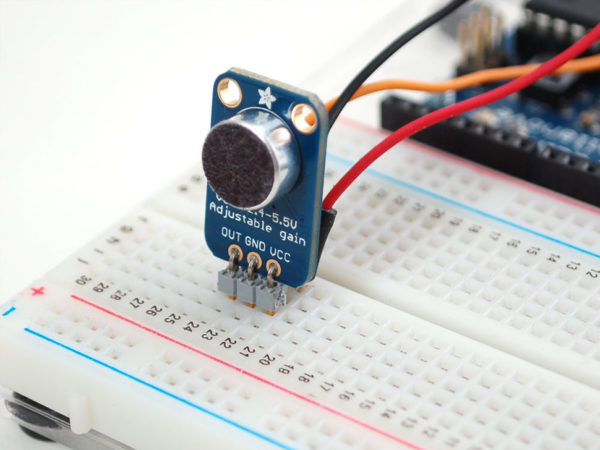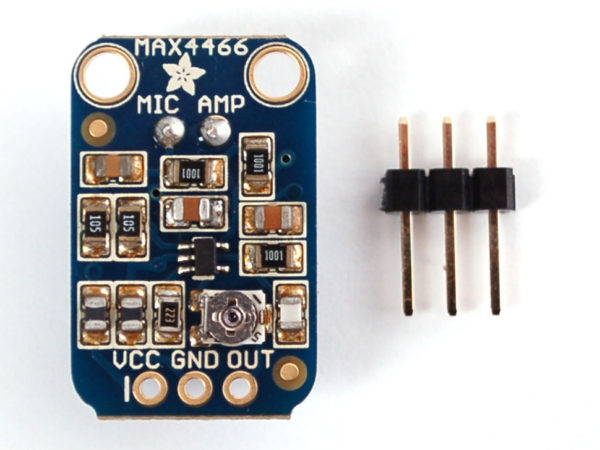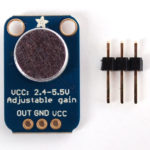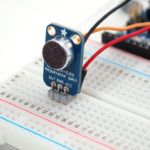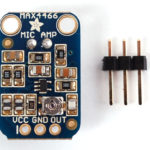Electret Microphone Amplifier - MAX4466 with Adjustable Gain
9,20 €
20-20KHz amplified magneto-electric microphone. Power supply range 2,4-5VDC. Ideal for voice-changers, sound recording / sampling, and responsive sound projects that used FFT.
- Description
- Product information
Description
Make your project able to listen with this 20-20KHz amplified magneto-electric microphone. For the amplification, the Maxim MAX446 was used, an operational amplifier designed specifically for this delicate task. The amplifier has excellent rejection of power supply noise, resulting in the sound being quite good and not too loud or shrill.
The best use for this breakout board is in projects such as voice-changers, sound recording / sampling, and sound responsive projects that used FFT. On the back side of the board, a small potentiometer is included for changing the gain. It is possible to set the gain from 25x to 125x. It therefore ranges from a peak-to-peak voltage of about 200mVpp (a person speaking at normal volume at a distance of about 15cm) which are good for plugging downstream something that expects an input at a "line level" without clipping, at about 1Vpp, ideal for reading the result with the ADC converter of a microcontroller. The output is rail-to-rail, so if the sound gets loud, the output can go as high as 5Vpp.
To use it, connect the GND pin to ground, VCC to 2,4-5VDC. To get the best performance, use the most moderate power possible (if you are using an Arduino, it would be the one available from pin 3,3V). The audio waveform comes out from the OUT pin.
The OUT pin is not designed to drive speakers or anything other than a pair of small earphones. You will need an audio amplifier (3,7W type, available in the store) if you want to connect the microphone directly to the speakers. If, on the other hand, you are going to connect it directly to the pins of a microcontroller, then you do not need an amplifier or a capacitor for decoupling, connected the pin OUT directly to the ADC pin of the microcontroller (on Arduino they are pin A).
For audio-responsive projects, we recommend using an FFT-driver-library like the one used in this Adafruit project, which can take an input audio signal and “translate” it into frequencies.
TECHNICAL SPECIFICATIONS:
MAX446 Low-Noise Microphone Amp Datasheet Electret Capsule Microphone Datasheet
TUTORIALS:
Voice changer project [by Adafruit]
Product information
| Weight | 0,05 kg |
|---|---|
| Length | 5x1x3 cm |
| BRAND | Adafruit |

